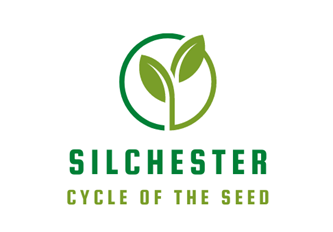Cycle of the Seed
Join Our Community Garden
Not sure how to start growing your own food? Enjoy gardening in company? Just want to meet some new people and have some fun? The Community Garden could be for you! We have a plot near the village hall, and we meet weekly over the growing season. We always welcome more people. For more details Contact Us
Why Grow Your Own Food?
The Cycle of the Seed pillar is designed to aid the local community of Silchester to grow its own food and raise awareness of the many benefits of food growing, including boosting the environment, improving health and well-being, bolstering food security, building stronger communities, and helping others to reconnect with the natural world around us.
(Turn on the sound and click the arrows to move forward)
What to Grow?
Want to grow fruit and veg, but short on time? Here are some suggestions for easy-care crops to grow from BBC Gardeners’ World Magazine.
https://www.gardenersworld.com/plants/low-maintenance-veg-and-fruit/
About Food

How much carbon?
According to the Impact Community Carbon Calculator the average carbon content in producing and delivering the food eaten by one household in Silchester is 4.87 tCO2e every year

Meat
Over half the CO2 attributable to food and drink comes from meat production. To reduce your CO2, try a couple of meat-free days each week.
Useful YouTube Videos
How do I grow salad leaves on the windowsill by Hayes Garden World
This video provides instructions on how to sow salad leaves, highlighting their ease of growth from seed. It recommends using Speedy Mix salad leaves for quick results, with harvest possible within 25 to 30 days during summer. The process involves filling a seed tray with compost, scattering seeds thinly, covering them lightly with sieved compost, and watering. After soaking in water for 15-20 minutes, the tray can be placed in a heated greenhouse or sunny windowsill for germination. Salad leaves should be ready for harvest in approximately 30 days.
Growing Potatoes in Containers – How to Grow Potatoes in Bags or Pots by GrowVeg
This video discusses the ease and satisfaction of growing potatoes in pots or sacks, emphasizing the variety of containers that can be used and the advantages of this method, such as no digging, easier protection from pests, and simpler harvesting. It provides step-by-step instructions for planting, caring for, and harvesting potatoes in containers, including tips for selecting seed potatoes, encouraging sprouting, watering, fertilizing, and determining readiness for harvest. Additionally, it suggests suitable potato varieties for container growing and offers serving suggestions for freshly harvested potatoes.
How to Chit Potatoes by Sarah Raven
In this video Sarah Raven is chitting Belle de Fontenay potatoes, a salad variety known for its waxy and delicious texture. Chitting involves encouraging the potatoes to sprout earlier for planting. They use an egg carton to hold the potatoes vertically, ensuring short, sturdy sprouts rather than long, thin ones. After placing the potatoes sprout-side up in a light but frost-free area, then plant them in the garden in about a month.
How to Grow Courgettes by Sarah Raven
In this video Sarah Raven provides a detailed guide on growing courgettes, emphasizing their ease of cultivation and productivity. It recommends sowing a variety of courgette types for visual appeal and flavour diversity. Tips on planting, including using manure for soil enrichment and succession planting for consistent harvests, are discussed. Harvesting at the ideal size for optimal flavour and texture is highlighted, along with the importance of removing excess leaves to promote fruit development. Additionally, the text covers harvesting courgette flowers, prevention of mildew with chive tea, and various culinary uses of courgettes and their flowers. Overall, it offers comprehensive insights into the cultivation and utilization of courgettes in home gardening.
How to Grow Tomatoes by Sarah Raven
In this video Sarah Raven provides a comprehensive guide to growing tomatoes, covering various stages from sowing to harvesting. It emphasizes techniques such as sowing seeds in trays, pricking out seedlings, planting them in appropriate containers, and employing ring culture for better growth and flavour. Pinching out side shoots and training the plants using special twine are highlighted as essential steps. Additionally, it suggests tips for DIY ring culture systems using plastic bottles and emphasizes the importance of pinching out the tips once the plants reach a certain height. Overall, it provides detailed insights into the entire process of tomato cultivation.
Resources for Children and Young People
Of course children can grow Potatoes , Courgettes and Tomatoes and give the adults a run for their money but they also might want to grow sunflowers, and YouTube shows how to do that as well.
How to sow sunflowers by The RHS
In this video Faye Howells, the community grow gardener at RHS Bridgewater, demonstrates how to plant a sunflower seed. Using a biodegradable pot part filled with soil, she advises overfilling the pot with compost and watering it thoroughly. The sunflower seed is planted on its side so it does not rot off in the pot, and the pot is placed on a sunny windowsill. With proper care, the seed should grow into a beautiful sunflower ready to be planted in the garden for the summer.
Also bear in mind large seeds are best for young children as they are easy to handle.
Here are some of the best seeds for children to grow:
- Peas
- Beans
- Sweetcorn
- Sunflower Seeds
- Cress (always a favourite for growing in the classroom)
The Innocent Big Grow Campaign
The Innocent Big Grow Campaign is aimed at primary school children.
The campaign includes lesson plans, activities, and templates suitable for primary school children, covering various topics such as the growth process, the history of fruits and vegetables, sensory experiences, and creative activities like potato stamping. Templates and additional resources are available for free download on the innocentbiggrow.com website, with ongoing support through email newsletters containing tips, tricks, and activities.
At the time of writing “Innocent“ do not seem to be giving away grow kits at the moment, however the following can be found on Amazon;
- Compostable cups
- Peat-free compost discs
- Salad and Vegetable Seeds Variety Pack
Or here’s a link to buy a kit. (Other retailers are available).
Pumpkins in Four Easy Steps
Finally, everyone knows children also love Pumpkins for Halloween. Imagine the joy of getting your kids to grow then with you.
Pumpkins Part 1: Sowing Pumpkin Seeds by Thompson and Morgan TV
This video by Thompson and Morgan TV introduces a guide on growing pumpkins from seed, highlighting the variety of options available and tips for successful cultivation. It emphasizes the enjoyment of gardening with children and the importance of considering the size of the pumpkin variety chosen. The process begins with selecting seeds, preparing pots with potting compost, and sowing seeds on their sides to prevent rotting. After watering and providing warmth for germination, the seedlings can be transferred to cooler conditions until ready for outdoor planting. The key to success lies in keeping the pumpkins well watered and warm.
Pumpkins Part 2: Planting out Pumpkin Plants by Thompson and Morgan TV
The second video discusses the next steps in growing pumpkins after starting them indoors. It advises on hardening off the seedlings before planting them outdoors in well-prepared soil with adequate sunlight. Tips include choosing a sunny, sheltered spot, preparing the soil with compost and fertilizers, and spacing plants according to variety requirements. It suggests creating mounds for better drainage and planting pumpkins on top of them. Additionally, it recommends setting up irrigation systems like a seeper hose for efficient watering.
Pumpkins Part 3: Feeding and Pollination by Thompson and Morgan TV
This video discusses the care and management of pumpkins as they grow. It emphasizes the need for regular fertilization, starting with high nitrogen feed, then transitioning to high phosphorous feed when flowers appear, and finally to high potassium feed as fruits develop. It highlights the importance of watering and training the long stems to prevent excessive spreading. The text also explains how to hand pollinate pumpkins if necessary and suggests selecting only a few strong fruits per plant to encourage larger growth. It concludes by inviting readers to the next update on harvesting pumpkins.
Pumpkins Part 4: Harvesting by Thompson and Morgan TV
This video discusses the final stages of pumpkin growth and harvesting. It notes the impact of powdery mildew on the plants, caused by wet, humid weather, despite earlier fungicide spraying. Tips include raising ripening pumpkins off the ground on a wooden board and removing shading foliage to aid ripening. It advises leaving pumpkins on the plants until fully ripened and hardened, but harvesting before the first frost to prevent spoilage. Harvested pumpkins should have several inches of stem attached. Suggestions for using pumpkins include using smaller ones for decorations, larger ones for carving, and roasting the seeds as a snack.
